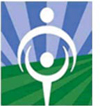
 |  |
| Slippery/uneven surface can lead to slips, trips and falls |
Weight of milk can strain muscles |
 |  | Non-skid shoes |
Good handwashing |
Is the child comfortable around calves?
Yes.
No. STOP! Children who are uncomfortable around animals are mroe likely to be injured.
Does the container of milk the child will lift weigh less than 10-15% if the child's body weight?
Yes.
No. CAUTION! An adult should lift the bucket or bottle.
Do the child have at least a 15-20 minute attention span? For example, can the child play a board game for 20 minutes?
Yes.
No. STOP! Children working beyond their attention span are easily distracted and more likely to be injured.
Does the child have good eye-hand coordination?
Yes.
No. CAUTION! An adult should fill the bottles and put them in the holders.
Can the child understand and repeat from memory a 5-step procedure?
Yes.
No. CAUTION! Children who can't remember the steps to a job should be watched constantly.
Has the child been trained on lifting techniques?
Yes.
No. STOP! Lifting incorrectly can cause back injury.
Has an adult demonstrated feeding milk to calves on site?
Yes.
No. STOP! Children learn best when shown how to do the job at the work site.
Has the child shown he or she can do the job safely 4 to 5 times under close supervision?
Yes.
No. CAUTION! An adult must watch constantly until the child shows he or she can do the job.
Can an adult supervise as recommended?
Yes.
No. STOP! The right level of supervision is key to preventing injuries.
What's the right amount? Here are suggestions- but remember, it depends on the child.
Age 10-11: WATCH constantly at first. When the child shows he or she can do the job, CHECK every few minutes.
Age 12-13: CHECK every few minutes at first. When the child shows he or she can do the job, LEAVE for 15 to 30 minutes.

North American Guidelines
for Children's Agricultural Tasks (NAGCAT)
For more information, visit: http://www.nagcat.org

National Children's Center for Rural and Agricultural Health and Safety Marshfield Clinic
1000 North Oak Avenue
Marshfield, WI 54449-5790
Phone: 1-800-662-6900 or 715-389-4999
Fax: 715-389-4996

National Farm Medicine Center
Marshfield Clinic
1000 North Oak Avenue
Marshfield, WI 54449-5790
Phone: 1.800.662.6900 or 715.389.4999
Fax: 715.389.3535
Disclaimer and Reproduction Information: Information in NASD does not represent NIOSH policy. Information included in NASD appears by permission of the author and/or copyright holder. More